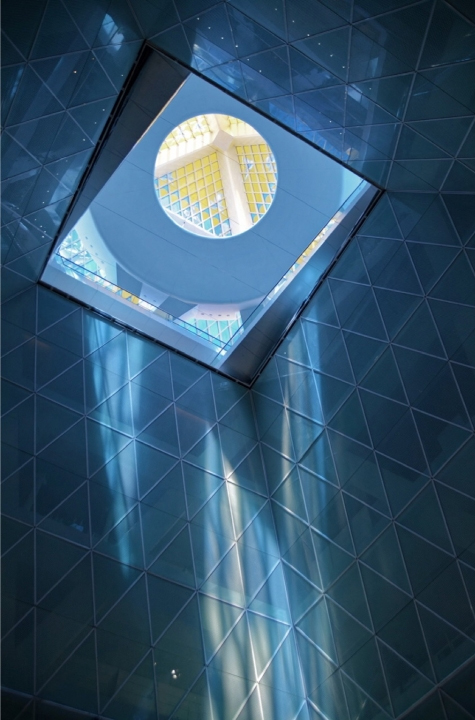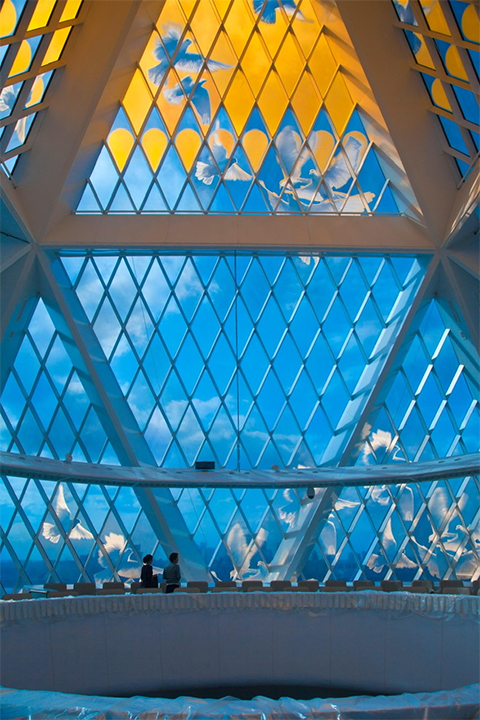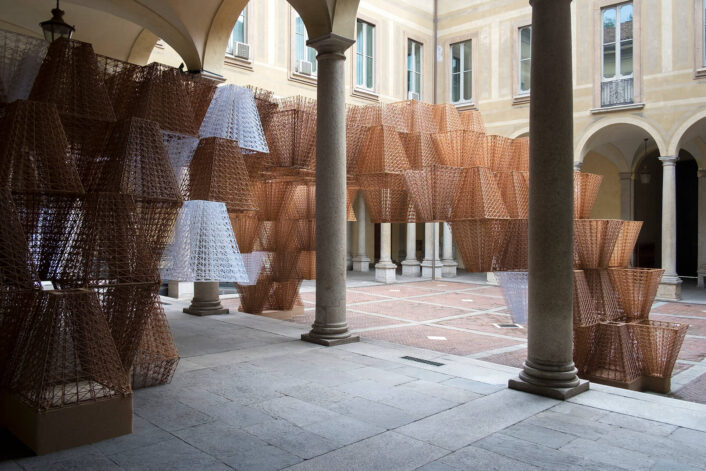Architecture
The pyramid in Nur-Sultan

If you go to the sixth floor, you can sit in the President’s chair.
Image courtesy of: Trip Advisor
In Kazakhstan’s Nur-Sultan, a Norman Foster-designed pyramid stands more than sixty meters high. The Palace of Peace and Reconciliation was built in the form of a regular tetrahedron and has been assigned the byname of the “Eighth Wonder of the World.”
The beautiful glass-and-steel pyramid opened in 2006 as the home for the triennial Congress of Leaders of World and Traditional Religions. Built as a symbol for unity and tolerance, the British architect designed the building under the President’s criteria… as a way to resolve the issue of religious wars.

Recently, the capital city’s name changed from Astana to Nur-Sultan in honor of the country’s first and only president.
Image courtesy of: The Discoverer
Each floor has a special purpose and you must take a diagonal moving elevator to other floors. The elevator moves with a slope of 60 degrees; similar lifts can be found in the Eifel Tower and the Luxor Hotel in Las Vegas.
Simply called, “the Pyramid” by locals, it is one of only a few pyramids that are to be found outside of Mexico and Egypt. The architecture was Foster’s idea… from start-to-finish, the pyramid took only 13 months to complete.

Looking upward at the Palace of Peace and Reconciliation.
Image courtesy of: Brian Clarke
Nursultan Nazarbayev, the country’s dictator, had a vision for his trophy city; and architects such as Sir Norman Forster to Zaha Hadid have been instrumental in fulfilling the dream. The architectural fantasy for the capital of Kazakhstan, Astana, has been the passion for the first and only president of Kazakhstan. Since 1989, he has been the lifelong leader and chief architect of the capital. For the past 20 years, he has been building city-sized monuments for himself.
Nazarbayev wrote, “Like people, cities have destinies. Each has a name and an individual biography of its own, a character which cannot be confused with that of any other place on earth.”

The pigeons…
Image courtesy of: Brian Clarke
The top of the pyramid is decorated with a stained glass window showing images of 130 pigeons, the symbol of the people of Kazakhstan. The number 130 is in honor of the number of ethnic groups living in the country. The building was built in accordance to the “Golden Section search” principles that dictate: height equal to the sides of the square lying at the base.
The all-encompassing tour takes you to the first floor to the Opera Hall that has 1,302 seats and is decorated to the highest degree. Afterwards, the tour goes to the 3rd floor where the largest “Royal Hall” is located. Viewing the traditional costumes of the 15 representatives of a select few cultures from Kazakhstan comes next. The eighth floor is encompassed by the “Cradle” which is surrounded by the glass with the doves. Those images direct toward the sky where you can see Kazakhstan’s flag. The pigeons “flying” up to the flag illustrate that all the representatives of religions and cultures living in Kazakhstan found their peace under the same sky. Thus the name… The Palace of Peace and Reconciliation.

No pun intended, a bird’s eye view of the Samruk.
Image courtesy of: My Modern Met
The 203-foot-tall pyramid houses everything from educational facilities to a 1,300-seat opera house. Once outside, you step into the beautiful Presidential Park, a massive public area that stretches out in front of the Ak Orda Presidential Palace. Encompassing over 60 acres, the green oasis sits within the city.
At the center of the design is a unique fountain that, when viewed from above, takes on the appearance of a bird. The bird, the Samruk, is a local, mythical creature that symbolizes life and freedom. In the mornings, the fountain is dry and the granite basins form a pedestrian square. As the day goes on, jets fill the “bird” with water that cascades away like a river.


